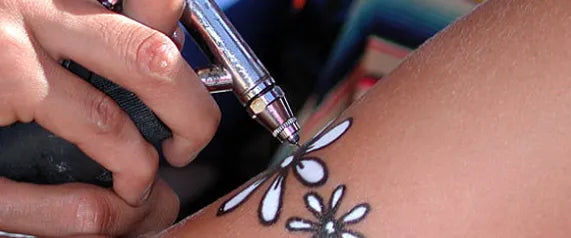How to Choose Best Airbrush Compressor for Beginners?
Posted by SUNZHUOQIANG

1. Application Type
large areasa compressor with a tank is a better choice

Airbrush Compressor with Air Tank AS-186
small areasTankless compressors

Mini Airbrush Compressor AS18-2
2. Tank Capacity
3. Output Thread and Motor

BDA1-A7 Airbrush Threaded Connector
4. Air Flow
The air flow is determined by the amount of air delivered by the compressor. It is measured in CFM (Cubic Feet per Minute) or LPM (L / min). Most compressors have an air flow between 20 to 50 LPM, which is equivalent to 0.70 to 1.76 CFM.
5. Air Pressure
Air pressure of the compressor is usually measured in PSI (Pounds per Square Inch). It's best to purchase a compressor with required air pressure for your application. For example, the air pressure needed for airbrushing T-shirts may be higher than what's required for body or nail painting.
Compressors are typically rated in CFM. When comparing compressors, you should also carefully check the CFM ratings. A rating of 40 PSI will be higher than 100 or 175 PSI. The most important thing to remember when checking is to compare CFM delivered at the same pressure.
There is no optimal pressure option, as the ideal pressure usually depends on the project. If you're painting a car, you might need high pressure of 80 to 100 PSI to complete the job quickly.
6. Duty Cycle
The duty cycle determines how long the compressor can run before the motor needs to stop and cool down. This helps avoid damage and extends the compressor's lifespan. If a compressor has a 50% duty cycle, it must run for 30 minutes and then rest for 30 minutes to cool down.
To calculate the required air flow, use the following basic formula:
Total Air Required×1/Duty Cycle=Compressor CFM Required
The duty cycle is usually expressed as a percentage, indicating how long the compressor motor will run within an hour. Here are some examples:
● 50% Duty Cycle: 30 minutes of run time per hour
● 25% Duty Cycle: 15 minutes of run time per hour
● 9% Duty Cycle: 5 minutes of run time and 55 minutes of cooling per hour
7. Auto-Stop Function
An auto-stop function allows you to preset the compressor to stop running at a specific air pressure. Once the pressure drops below a certain level, the compressor will restart. This feature is beneficial as it reduces the compressor's run time and motor wear, ensuring longer durability and efficiency.

Airbrush Compressor with Auto-Stop Function(AS18-2K)
8. Hose Length
It's best to have a long hose so you can reach all areas you need to paint without interruption. A 4-foot long hose is suitable for working on canvases and other medium to small projects, such as food decoration, makeup application, etc. For full coverage tasks like car painting, you might need a 10-foot long hose. Make sure to purchase a compressor with a hose that matches the projects you're working on.
When considering hose length, keep in mind:
● Flexibility: Longer hoses provide more flexibility in movement and positioning.
● Pressure Loss: Very long hoses can lead to slight pressure loss, which may affect performance in precise work.
● Storage: Consider storage space for longer hoses when not in use.
● Compatibility: Ensure the hose connections are compatible with your airbrush and compressor.
● Material: Look for durable, kink-resistant materials for longer-lasting performance.
9. Power Check
10. Noise Level

Low Noise Airbrush Compressor (ABPST08)
Key points to note:
● Average power range for airbrush compressors: 150-200 watts
● Higher power generally means higher cost
● Noise levels for quiet compressors: 55-60 dB
● Quieter compressors are usually more expensive
● Consider your working environment when choosing noise level
11. Size and Weight
Typically, airbrush compressors weigh more than 10 pounds, with additional weight from attachments, wheels, and handles. Some models are heavier and may be difficult to move, making them suitable for storage in art studios and garages. Portable and lightweight models are ideal for beginners.
12. Value
You should look for models that are reasonably priced yet capable of handling all your tasks. Bonus accessories are always beneficial to have.
13. Reliability
As mentioned earlier, airbrush compressors are machines with motors and pumps. If you use an unreliable airbrush compressor, it may develop problems over time. Therefore, you should consider purchasing an airbrush compressor from reliable brands that offer durable products and decent warranty policies.
14. Warranty and Durability
These are key factors that help you decide which model is worth investing in. Consider purchasing a model with at least a 1 or 2 year warranty. The longer the warranty, the better the product. Also, ensure that the model you choose is made from high-quality materials.
15. Additional Considerations
Some other important features to look out for include:
● Built-in Fan: For cooling the high-power working engine.
● Kit Options: Comprehensive kits that include various tools and accessories.
● Thermal Protection: Engine components with thermal protection to reduce overall heat.
● Handles and Rubber Feet: For ease of transport and stability.
16. Accessories
